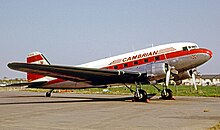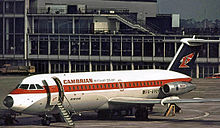
Cyprus Airways (Public) Ltd. was the flag carrier airline of Cyprus. It was established in September 1947 and ceased operations on 9 January 2015. Cyprus Airways had its operating base at Larnaca International Airport.

The Airspeed AS.57 Ambassador is a British twin piston-engined airliner that was designed and produced by the British aircraft manufacturer Airspeed Ltd. It was one of the first postwar airliners to be produced.
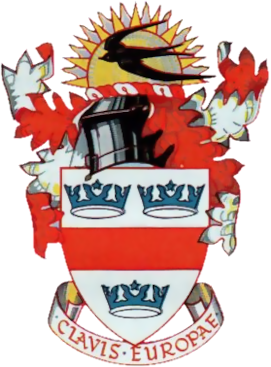
British European Airways (BEA), formally British European Airways Corporation, was a British airline which existed from 1946 until 1974.

The BAC One-Eleven is an early jet airliner produced by the British Aircraft Corporation (BAC). Originally conceived by Hunting Aircraft as a 30-seat jet, before its merger into BAC in 1960, it was launched as an 80-seat airliner with a British United Airways (BUA) order on 9 May 1961. The prototype conducted its maiden flight on 20 August 1963, and it was first delivered to BUA on 22 January 1965. The 119-seat, stretched 500 series was introduced in 1967. Total production amounted to 244 until 1982 in the United Kingdom and between 1982 and 1989 in Romania where nine Rombac One-Elevens were licence-built by Romaero.
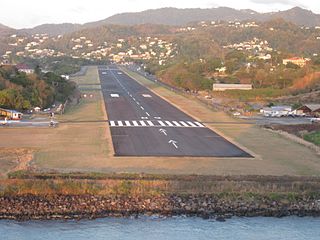
George F. L. Charles Airport is the smaller of the two airports in Saint Lucia, the other being Hewanorra International Airport. It is located 2 km (1.2 mi) north of Castries, the capital city. George F. L. Charles Airport is managed by the Saint Lucia Air and Seaports Authority (SLASPA). Its runway runs parallel to a pristine beach, Vigie Beach, which is a popular tourist attraction.

Philip S. W. Goldson International Airport is an airport that serves the nation of Belize's largest city, Belize City along the eastern coast of Central America. It was named after politician Philip S. W. Goldson, who died in 2001. The airport is at an elevation of 5 m (16 ft), which means both the airport and the entirety of Belize City are at risk of serious flooding due to its low elevation and coastal location. For this reason, Belize's capital has been moved to Belmopan, but the airport remains the largest and busiest in the country. With stable passenger growth, Philip S. W. Goldson International Airport is currently the fifth busiest airport in Central America. Belize Airport covers 457 acres of land and has one runway.

Dan-Air was an airline based in the United Kingdom and a wholly owned subsidiary of London-based shipbroking firm Davies and Newman. It was started in 1953 with a single aircraft. Initially, it operated cargo and passenger charter flights from Southend (1953–1955) and Blackbushe airports (1955–1960) using a variety of piston-engined aircraft before moving to a new base at Gatwick Airport in 1960, followed by expansion into inclusive tour (IT) charter flights and all-year round scheduled services. The introduction of two de Havilland Comet series 4 jet aircraft in 1966 made Dan-Air the second British independent airline after British United Airways to begin sustained jet operations.
New Zealand National Airways Corporation, popularly known as NAC, established by the New Zealand National Airways Act, 1945, was the national domestic airline of New Zealand until 1978 when it amalgamated with New Zealand's international airline, Air New Zealand. The airline was headquartered in Wellington.

British United Airways (BUA) was a private, independent airline in the United Kingdom formed as a result of the merger of Airwork Services and Hunting-Clan Air Transport in July 1960, making it the largest wholly private airline based in the United Kingdom at the time. British and Commonwealth Shipping (B&C) was the new airline's main shareholder.
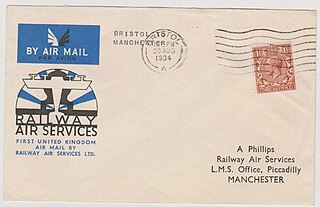
Railway Air Services (RAS) was a British airline formed in March 1934 by the Big Four railway companies and Imperial Airways. The airline was a domestic airline operating routes within the United Kingdom linking up with Imperial's services.
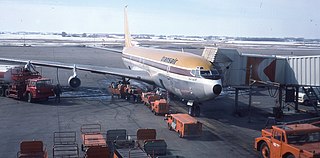
Transair was an airline based in Canada. It was purchased by Pacific Western Airlines in 1979. Transair's operational headquarters was located at the Winnipeg International Airport in Manitoba.
Manx Airlines was an English-owned, Isle of Man-based airline that existed between 1982 and 2002. Its head office was located on the grounds of Ronaldsway Airport in Ballasalla, Malew. An airline of the same name existed between 1947 and 1958.

British Eagle International Airlines was a major British independent airline that operated from 1948 until it went into liquidation in 1968. It operated scheduled and charter services on a domestic, international and transatlantic basis over the years.

The Hawker Siddeley HS-121 Trident is a British airliner produced by Hawker Siddeley. In 1957, de Havilland proposed its DH.121 trijet design to a British European Airways (BEA) request. By 1960, de Havilland had been acquired by Hawker Siddeley. The Trident's maiden flight happened on 9 January 1962, and it was introduced on 1 April 1964, two months after its main competitor, the Boeing 727. By the end of the programme in 1978, 117 Tridents had been produced. The Trident was withdrawn from service in 1995.

Trans European Aviation was a British charter airline which operated from 1954 until closure in 1963. With the introduction of the larger Lockheed Constellation to its services, the airline name was changed in 1961 to Trans European Airways.

Channel Airways was a private airline formed in the United Kingdom in 1946 as East Anglian Flying Services.
Northeast Airlines (NEA) – known as BKS Air Transport until 1970 – was an airline based in the United Kingdom that operated from 1952 until 1976, when its operations and fleet merged into British Airways.

British Westpoint Airlines was a British charter and scheduled airline from 1962 to 1967.

Jersey Airlines was an early post-World War II private, independent British airline formed in 1948. In 1952, the airline operated its first scheduled service. Four years later, British European Airways (BEA) took a 25% minority stake in Jersey Airlines and made it an "associate". In June 1958, a Jersey Airlines de Havilland Heron became the first commercial airliner to arrive at the newly reconstructed Gatwick Airport. In 1960, Jersey Airlines ordered four state-of-the-art Handley Page Dart Herald 200 series turboprops. By 1962, BEA had sold its 25% minority holding in Jersey Airlines. The same year, Jersey Airlines became part of the British United Airways (BUA) group of companies. In August 1963, Jersey Airlines changed its trading name to British United (C.I.) Airways. Following the BUA group's 1967/8 reorganisation, BUA (C.I.) was absorbed into British United Island Airways (BUIA) in November 1968.

